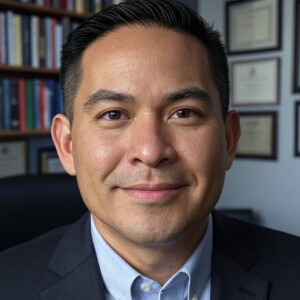Understanding Autism Spectrum Disorder: Symptoms, Levels & Diagnosis

Autism Spectrum Disorder (ASD) is a neurodevelopmental condition characterized by challenges with social communication and repetitive behaviors. The spectrum includes three support levels based on severity. While autism is lifelong, early intervention and support help individuals adapt and thrive. Diagnosis uses DSM-5 criteria evaluated by licensed clinical psychologists.
As autism diagnoses become more common, families and individuals have many questions about this complex neurodevelopmental condition. What exactly is autism spectrum disorder? How do you recognize the signs? What does "being on the spectrum" really mean? Can autism be outgrown, or is it a lifelong condition?
With abundant information available online, separating fact from fiction can be challenging. The situation becomes more complex as psychologists and psychiatrists continually update their research and diagnostic approaches. What was considered accurate five years ago may now be outdated or require revision based on new understanding.
This comprehensive guide serves as your introduction to autism spectrum disorder, answering pressing questions and providing current, evidence-based information about this condition that affects millions of individuals worldwide.
Table of Contents
What Is Autism Spectrum Disorder?
Autism Spectrum Disorder (ASD) is a neurodevelopmental condition that affects how a person perceives and interacts with the world. The term "spectrum" reflects the wide range of experiences, strengths, and challenges that autistic individuals face. No two people with autism are exactly alike.
According to the Centers for Disease Control and Prevention, approximately 1 in 36 children in the United States has been identified with ASD based on 2023 surveillance data from 8-year-olds monitored by the CDC's Autism and Developmental Disabilities Monitoring (ADDM) Network. This represents a significant increase in identification compared to previous decades, though experts debate whether this reflects rising prevalence or improved diagnostic awareness.
Autism manifests across all racial, ethnic, and socioeconomic groups. It's considered a lifelong condition, though symptoms and support needs may change over time. Many autistic individuals lead independent, fulfilling lives, especially with early intervention and appropriate support.
How Autism Is Diagnosed
If you're just learning about autism, you may wonder how medical professionals identify this condition. Clinical psychologists, developmental pediatricians, and psychiatrists diagnose autism using standardized criteria and comprehensive evaluations.
The primary diagnostic tool is the DSM-5 (Diagnostic and Statistical Manual of Mental Disorders, Fifth Edition), which outlines specific criteria for Autism Spectrum Disorder. This manual helps clinicians determine if children and adults match certain behavioral patterns and developmental characteristics most closely associated with ASD.
The diagnostic process typically involves multiple steps: developmental screenings, comprehensive diagnostic evaluations, behavioral observations, parent or caregiver interviews, and sometimes genetic testing or medical exams to rule out other conditions. Child psychologists and developmental psychologists play crucial roles in accurate autism assessment.
Major Symptoms of Autism
It's essential to understand that autism presents differently in each individual. While there are common characteristics, not every autistic person exhibits all symptoms, and severity varies widely. The following sections outline frequently observed traits in autism spectrum disorder.
Social Communication Challenges
When it comes to social interactions, most people with autism experience some level of difficulty. The degree varies considerably, but social communication challenges represent a core feature of ASD.
Autistic individuals may experience trouble making friends or initiating social interactions. They often prefer solitary activities and may not naturally seek out play or conversation with peers. Showing or receiving physical affection might feel uncomfortable or unnatural, and they may resist these interactions.
Many autistic people find it challenging to express emotions in ways that others expect. They may also struggle to understand other people's emotional states, which can appear as reduced empathy. However, this represents a difference in processing emotions rather than a lack of caring. Making eye contact may feel uncomfortable or overwhelming, and facial expressions might not match internal emotional states.
Speech and Language Patterns
Speech and language development often differ in autistic children. Some experience delays in learning to speak, while others develop language on schedule but use it in unique ways.
Autistic individuals frequently struggle with understanding tone, humor, or sarcasm. Children may repeat words or phrases (called echolalia), which serves as self-soothing rather than communication. Both children and adults might have difficulty starting or maintaining conversations.
When autistic people struggle to express needs or process overwhelming situations, this can lead to meltdowns or shutdowns. These aren't tantrums but rather responses to sensory or emotional overload. Understanding and accommodating these communication differences creates more supportive environments.
Repetitive Behaviors and Movements

Many autistic individuals display repetitive body movements called stimming (self-stimulatory behavior). These may include hand flapping, rocking, spinning, or other rhythmic motions. Stimming helps regulate sensory input and emotions, serving an important self-regulation function.
Movement patterns may appear unusual, including atypical posture, gait, or coordination challenges. These differences reflect how autistic brains process motor planning and spatial awareness.
Sensory Processing Differences
People on the spectrum often experience sensory processing issues that manifest as either hypersensitivity (over-responsiveness) or hyposensitivity (under-responsiveness) to sensory input.
Hypersensitive individuals may react strongly to loud noises, bright lights, certain textures, or specific smells. Clothing tags, seams, or particular fabrics might cause significant discomfort. In contrast, hyposensitive individuals might not respond typically to pain, temperature, or other physical sensations.
Some autistic people seek additional sensory input to regulate their nervous systems, while others avoid overwhelming stimuli. Many individuals experience both hyper and hypo sensitivities in different sensory domains, creating complex sensory profiles that require individualized accommodation strategies.
Focused Interests and Routines
Autistic people often develop intense, focused interests in specific subjects, objects, or activities. For children, this might involve trains, dinosaurs, or mechanical systems. Adults frequently pursue deep expertise in particular professional or academic fields. When something captures their interest, they'll learn everything possible about it and enthusiastically share information with others.
Routine and predictability provide comfort and security. Unexpected changes to schedules or plans can cause significant distress. Transitions between activities may require more time and support. Understanding this need for predictability helps caregivers and educators create more supportive environments.
Play and Imagination
Autistic children enjoy play but often engage with toys and activities differently than neurotypical peers. They may prefer exploring how objects work mechanically rather than engaging in pretend play. Lining up toys, organizing objects by characteristics, or watching repetitive motions (like spinning wheels) often captures their attention.
Some autistic children develop strong attachments to specific objects that might seem unusual, such as keys, strings, or rubber bands. Because social communication can be challenging, sharing toys and taking turns may require explicit teaching and support.
Understanding the Three Spectrum Levels

Since 2013, autism has been classified using three levels based on support needs rather than specific symptom profiles. This system helps communicate how much assistance an individual requires to function in daily life. School psychologists and educational teams use these levels to develop appropriate support plans.
| Level | Description | Social Communication | Restricted/Repetitive Behaviors | Support Needed |
|---|---|---|---|---|
| Level 3 | Requiring Very Substantial Support | Very limited verbal communication, minimal response to social approaches, severe difficulty with change | Extreme difficulty coping with change, repetitive behaviors markedly interfere with functioning | Intensive daily support across all settings |
| Level 2 | Requiring Substantial Support | Limited verbal skills, reduced or odd nonverbal communication, noticeable social difficulties even with support | Difficulty coping with change, repetitive behaviors appear often enough to be obvious | Substantial daily support in multiple contexts |
| Level 1 | Requiring Support | Difficulty initiating interactions, may speak in complete sentences but struggle with back-and-forth conversation | Inflexibility causes interference with functioning in one or more contexts | Support is needed, without which difficulties are noticeable |
It's important to recognize that these levels describe current support needs, not a person's worth or potential. Support levels can and do change over time with intervention, skill development, environmental modifications, or changing life circumstances. An individual classified as Level 2 in childhood might require Level 1 support as an adult, or vice versa, depending on context and demands. The goal is matching support to needs, not labeling or limiting individuals.
Can Autism Be Outgrown?
The straightforward answer is no. Autism represents a fundamental difference in how the brain develops and processes information. Whether mild, moderate, or significant, autism is something people are born with - it's part of their neurological makeup, not a disease or illness that can be cured.
While some small research studies suggest that a very small percentage of children who received intensive early intervention no longer meet diagnostic criteria, these cases are extremely rare. Researchers continue debating whether these individuals truly "outgrew" autism, whether they developed such effective coping strategies that symptoms became less apparent, or whether initial diagnoses were incorrect. In these rare cases, initial diagnosis accuracy, developmental changes, and learned coping strategies may all influence outcomes, but this should not be interpreted as autism being "cured" or "recovered from."
This research can offer hope but also create harmful expectations. Even with the earliest possible intervention and comprehensive support, the vast majority of autistic children will remain autistic throughout their lives. Setting unrealistic cure expectations can damage parent-child relationships and undervalue the autistic person's identity.
Growth, Adaptation, and Support
What genuinely offers hope is that many autistic people learn to adapt and develop strategies to manage challenging symptoms. Early intervention proves extremely helpful in teaching skills that make daily life easier. Support helps individuals with more significant support needs gain independence and function with appropriate accommodations.
Many autistic individuals and their families report that while challenges exist, autism also brings unique gifts: exceptional attention to detail, deep expertise in areas of interest, pattern recognition abilities, honest communication, and unique perspectives. The neurodiversity movement emphasizes accepting and supporting autistic people rather than trying to "fix" or "cure" them.
Understanding Outdated and Current Terminology

As psychiatrists, psychologists, and therapists continue learning about autism, diagnostic classifications evolve. Before 2013, autism was divided into five distinct categories under Pervasive Developmental Disorders (PDDs): Autistic Disorder, Asperger's Disorder, Rett's Disorder, Childhood Disintegrative Disorder, and Pervasive Developmental Disorder Not Otherwise Specified (PDD-NOS).
After 2013, the DSM-5 simplified these categories into the single umbrella term "Autism Spectrum Disorder." However, you'll still encounter older terminology in conversations, educational materials, and even among some professionals. Understanding both current and outdated terms helps navigate discussions about autism.
Asperger's Syndrome
While Asperger's Syndrome is no longer a separate diagnosis, people still use this term colloquially. It typically refers to individuals with "high functioning" autism - those who are verbal, have average or above-average intelligence, but experience social communication challenges.
Someone previously diagnosed with Asperger's would now likely be classified as Level 1 ASD. These individuals typically function independently but struggle with social nuances. They may excel academically or professionally, especially in areas matching their intense interests, while finding social relationships challenging.

The Problems with "Mild" and "High-Functioning"
"Mild autism" and "high-functioning autism" aren't diagnostic terms but remain common in everyday language. These terms can be misleading and even harmful because they oversimplify complex profiles.
An individual might be highly verbal and intelligent (considered "high functioning") yet have severe sensory processing issues that make public environments extremely challenging. Conversely, someone with limited verbal communication might have fewer sensory or social difficulties, making them more comfortable in various settings. Which person has "mild" autism? The question reveals why these labels don't work well.
Terms like "high functioning" can minimize the significant support someone needs, while "low functioning" can underestimate someone's capabilities and potential. The support level system (Levels 1-3) more accurately describes functional needs without reducing individuals to oversimplified labels.
PDD-NOS (Pervasive Developmental Disorder, Not Otherwise Specified)
PDD-NOS was an outdated diagnostic term for autism that didn't fit neatly into other categories. It was sometimes called "atypical" autism because individuals might exhibit some but not all classic autism characteristics.
For example, someone might have significant social communication challenges but no sensory issues or repetitive behaviors. Under current diagnostic criteria, these individuals would be diagnosed with ASD at the appropriate support level.
Childhood Disintegrative Disorder and Rett Syndrome
Childhood Disintegrative Disorder (CDD), sometimes called Heller's Syndrome, shares some similarities with autism but is now recognized as a distinct, rare genetic condition that is classified separately from Autism Spectrum Disorder in the DSM-5. Children with CDD show typical development before regressing dramatically between ages 2 and 4. They often develop seizure disorders as well. Because CDD has a different underlying cause and trajectory, it was removed from the autism spectrum classification.
Rett Syndrome is another genetic condition that was once considered part of the autism spectrum but is now classified separately as a distinct neurological disorder. Occurring almost exclusively in girls, Rett Syndrome causes severe impairments affecting speech, walking, eating, and breathing. Children with Rett Syndrome typically display repetitive hand movements and significantly impaired motor function. While it shares some superficial similarities with autism, the genetic cause (MECP2 gene mutation) and progression differ substantially, warranting its separate classification outside the autism spectrum.
Support, Intervention, and Moving Forward
Regardless of diagnostic labels or support levels, what matters most is ensuring autistic individuals receive appropriate intervention and support. The earlier support begins, the greater the potential benefit for both autistic people and their caregivers.
Effective interventions might include speech therapy, occupational therapy, behavioral supports, social skills training, and educational accommodations. Many autistic adults emphasize the importance of support that respects their neurodivergence rather than trying to make them appear "normal."
Over time, with patience, understanding, and appropriate support, autistic individuals and their support networks learn to adapt to the unique aspects of living with ASD. Acceptance and accommodation often prove more valuable than attempts to eliminate autistic characteristics.
Frequently Asked Questions About Autism
What causes autism spectrum disorder?
Research indicates autism results from a combination of genetic and environmental factors that affect brain development. There's no single cause, and scientists continue studying the complex interactions that lead to autism. Vaccines do not cause autism - this has been thoroughly debunked by extensive research.
At what age can autism be diagnosed?
Autism can be reliably diagnosed as early as 18-24 months using standardized screening tools such as the Modified Checklist for Autism in Toddlers (M-CHAT), though some signs may appear even earlier. Many children receive diagnoses between the ages of 2-4. However, some individuals, particularly those with Level 1 support needs, may not receive diagnoses until adolescence or adulthood.
Is autism more common in boys or girls?
Autism is diagnosed more frequently in boys than girls, with ratios around 4:1, though some recent studies find lower ratios (approximately 3:1) as awareness of autism in girls and women increases. Researchers increasingly recognize that autism in girls and women often presents differently and may be underdiagnosed due to better social camouflaging abilities and different symptom presentations that don't match traditional male-based diagnostic criteria.
Can adults be diagnosed with autism?
Yes, many adults receive autism diagnoses later in life, particularly those who developed coping strategies that masked symptoms or who didn't fit stereotypical autism presentations. Adult diagnosis can provide validation, self-understanding, and access to appropriate support and accommodations.
What's the difference between autism and ADHD?
While autism and ADHD can share some symptoms (attention difficulties, impulsivity), they're distinct conditions. Autism primarily involves social communication challenges and restricted/repetitive behaviors, while ADHD centers on attention regulation, hyperactivity, and impulsivity. However, the conditions can co-occur in the same individual.
Should I use "person with autism" or "autistic person"?
Language preferences vary among individuals. "Person-first language" (person with autism) emphasizes the person before the condition. "Identity-first language" (autistic person) acknowledges autism as an integral part of identity. Many autistic adults prefer identity-first language, but it's best to ask individuals about their preferences.
What careers work with autistic individuals?
Many psychology and counseling professionals specialize in autism support, including clinical psychologists, developmental psychologists, school psychologists, behavioral therapists, speech-language pathologists, and occupational therapists. These professionals require specialized training in autism assessment and intervention strategies.
Applied Behavior Analysis (ABA), the gold-standard evidence-based treatment for autism spectrum disorder, was developed by behavioral psychologists who apply learning principles to increase adaptive behaviors and reduce interfering behaviors in individuals with autism.
Key Takeaways
- Autism is a spectrum - Each autistic individual experiences unique strengths and challenges across three support levels (1-3)
- Early diagnosis matters - Clinical psychologists use DSM-5 criteria to diagnose autism, often by age 2-4, enabling earlier intervention
- Core characteristics include - Social communication differences, sensory processing variations, and repetitive behaviors or focused interests
- Autism is lifelong - While adaptation and skill development occur with support, autism isn't outgrown or cured
- Terminology has evolved - Terms like Asperger's and PDD-NOS are outdated; the current diagnosis is Autism Spectrum Disorder
- Support is essential - Early intervention, appropriate accommodations, and acceptance-based approaches help autistic individuals thrive
- Neurodiversity matters - Many autistic individuals and advocates emphasize acceptance and support rather than seeking cures
Medical Disclaimer: This content is for informational and educational purposes only and does not constitute medical advice. Autism Spectrum Disorder should be diagnosed and treated by qualified healthcare professionals, including licensed clinical psychologists, developmental pediatricians, or psychiatrists. If you suspect autism in yourself or a loved one, consult with a healthcare provider for proper evaluation and guidance. Information presented here reflects current understanding as of 2025 and is subject to change as research evolves.







